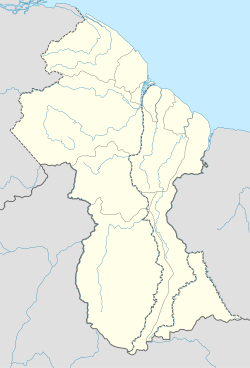Santa Rosa | |
|---|---|
 Santa Rosa Secondary School | |
| Coordinates: 7°39′0″N58°57′0″W / 7.65000°N 58.95000°W | |
| Country | |
| Region | Barima-Waini |
| Population (2012) [1] | |
• Total | 913 |
Santa Rosa is a community in the Barima-Waini region of northern Guyana. Santa Rosa mission was established in 1840, [2] and is one of the earliest Catholic Missions in Guyana. [3] The village is part of the North West Amerindian District. [4]
